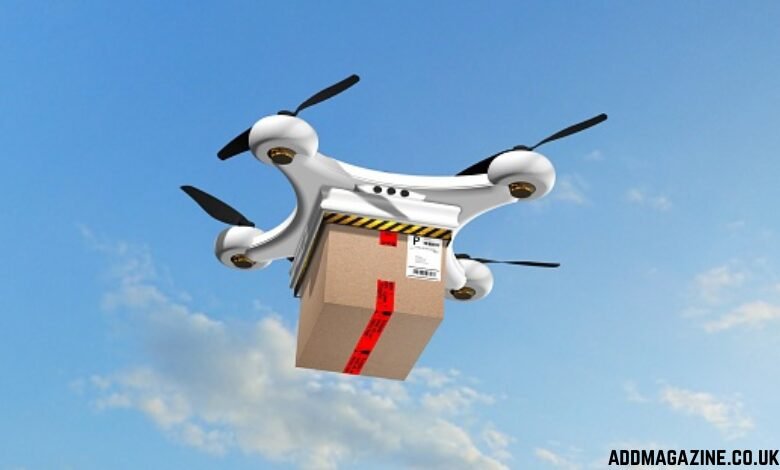Introduction: Redefining Global Commerce
As digital connections reach beyond borders, global retail is in the midst of a technology-led revolution. Long are gone the times of geographical barriers, logistical difficulties and regional culture preventing global commerce.
The sunrise of revolutionary business is wetting its face as we speak but to take just a few examples, AI, blockchain, and the IoT are driving retail in new territories of success.
These offerings help businesses expand to new markets, drive down costs and provide an unforgettable experience for customers.
It then describes how these innovations are shaping the next chapter in global commerce, enabling effortless world-wide trade and sustainable growth.
E-Commerce Platforms: Bridging Borders
E-commerce platforms including Amazon, Alibaba and Shopify have changed the face of international retail by significantly making it easier for businesses to sell things in other countries.
These services use AI (artificial intelligence) algorithms to process currency conversion, tax liability, and local legislation with ease. SMEs “small to medium sized enterprises,” can now enter the world market, where they could not have entered before.
Recommendation engines powered by AI, based on consumer behavior can provide a customer experience three times more conversions than traditional recommendations in some territories.
By predicting demand and effectively balancing inventory, such applications eliminate inefficiency in the supply chain and enable retailers to serve global consumer needs.
Supply Chain Innovations: Efficiency and Transparency
Technological advancements are changing the way supply chain is managed under international retailing.Products with IoT connections shadow packages from the warehouse to the location. Some documents are tamper-resistant, courtesy of blockchain tech itself, which reduces fraud and forgery.
Delivery routes are streamlined for minimal costs and transit times using predictive analytics.
Companies, for example, will so that they can better the last mile logistics be able to send parcel to South Korea with AI-combined drone deliveries in urban environments. Industry sources say it is more efficient by 20-25% in the supply chain, so global retail is less wasteful and sustainable.
Payment Technologies: Seamless Transactions
Break down financial barriers in international eCommerce with Fintech innovation. Digital wallets such as PayPal and Stripe provide secure, instantaneous cross-border payments with fraud protection included.
Crypto currencies and internet based secure transactions for lower fees than banks is an alternative to banking in many markets.
Mobile payment applications, particularly popular in Asia and Africa, rely on QR codes for ease of making payments which had pushed m-commerce to 50%+ of the world’s e-retail trade.
By providing payments the local market recognizes, these solutions decrease cart abandonment and establish trust with shoppers.
Immersive Technologies: Enhancing Customer Engagement
Augmented Reality (AR) and Virtual Reality (VR) have transformed customer engagement in global retail. With AR apps, consumers can see products in person — with clothes that fit (or don’t) or furniture that fits a room regardless of the language or culture, AR does not have to be translated.
Based on these dynamic experiences, brands including IKEA and Sephora report decrease in returns. The home pages offer 24/7 multilingual customer support via AI-powered chatbots that incorporate personalization based on user data.
These instruments not only help to satisfy but provide actionable knowledge for local marketing strategies setting up loyalty across varied global markets.
Key Technologies Driving International Retail Growth
| Technology | Description | Key Impact on Retail | Adoption Rate (Global Estimate) |
| AI & Machine Learning | Algorithms for personalization and predictive analytics | Increases sales by optimizing recommendations and inventory | 45% of retailers |
| Blockchain | Secure, decentralized ledgers for transactions | Reduces fraud and enhances supply chain transparency | 30% in logistics |
| IoT | Connected devices for real-time tracking | Improves efficiency in shipping and stock management | 40% in warehouses |
| AR/VR | Immersive tools for virtual product trials | Boosts customer engagement and lowers returns | 25% in e-commerce |
| Fintech Payments | Digital wallets and crypto for cross-border transfers | Lowers costs and speeds up transactions | 60% in mobile retail |
Conclusion: A Connected Future
Technology and the internationalization of retail are conspiring to form one fluid, interconnected market. Susanna Lee Tech AI, blockchain, IoT and immersive technologies are not only tools but enablers for sustainable growth to overcome legacy obstacles that have existed in businesses for decades.
“International retail… will persist and grow as such innovative solutions more fully develop and with new technology fundamentals like 5G and edge computing among others, is due to thrive providing Tijuana consumers the vast experience-rich interfaces they desire.
Those who are stepping into this tech frontier will be the ones to lead as we pave the way for a resilient, interconnected future of commerce.




